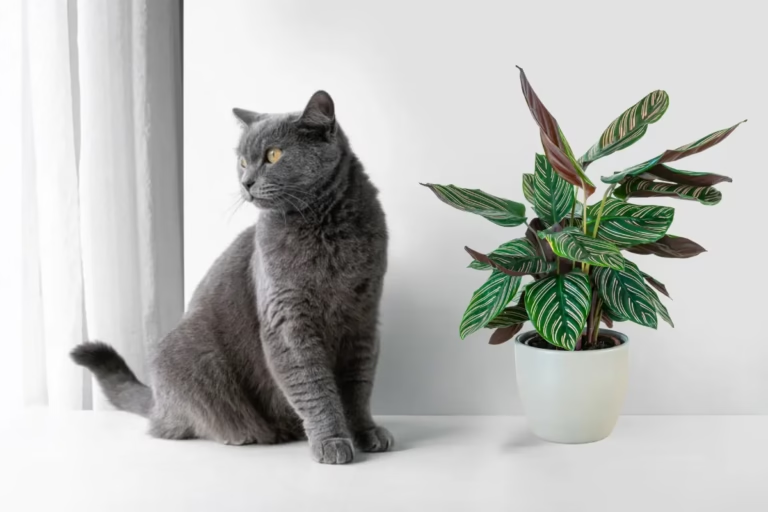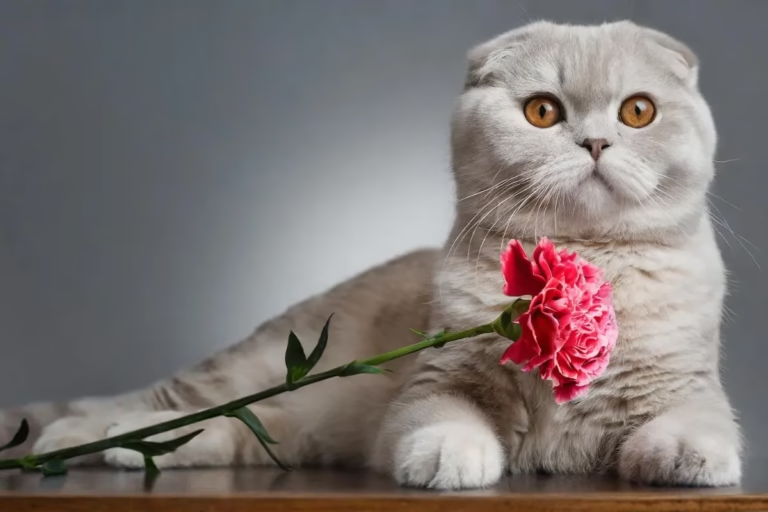Is Cordyline Toxic to Cats? A Complete Pet Owner’s Guide

If you’re a cat owner, loving your indoor houseplants while caring for your feline companion can be a tricky balance. The Cordyline is a striking plant, but it’s important to know that it can be toxic to cats. Many pets are naturally curious, and just a small nibble can lead to health risks. To keep your kitty safe, always choose pet-friendly plant choices that bring life to your home without compromising safety.
Building your own indoor jungle is still possible—you just need the right alternative plants that protect your cat and keep your pet healthy. Keeping your Cordyline out of reach or swapping it for a safe option is a responsible step for every loving pet parent. Knowing which plants are toxic helps ensure your home stays safe for your furry friend.
Quick Answer
Yes, Cordyline is toxic to cats due to saponins, which can cause vomiting, drooling, and lethargy if ingested. Keep this plant out of cat’s reach and contact a vet if exposure occurs.
Let’s Meet Cordyline Plant
Cordyline, or Ti plant, is a tropical houseplant with vibrant foliage in green, pink, reds, and purples, adding bold color to any room. This popular choice among plant lovers is part of the Asparagaceae family, with species like Cordyline fruticosa suited for indoor growing. It’s native to the Pacific Islands, Southeast Asia, and Australia, thriving in warm, humid environments with indirect sunlight. A bright corner gives a perfect splash of life.

Easy to care for, it fits the nature of calm indoor spaces. However, whether it’s safe for furry friends is worth checking. Its lush foliage and striking color make it a popular décor plant. Originating from Australia, Southeast Asia, and the Pacific Islands, it thrives in humid zones with proper care, sunlight, and suitable environments, making it ideal for any houseplant setup.
Are Cordyline Plants Toxic to Cats?
Yes! shorlty and clearly, Cordyline is toxic to cats. ASPCA listed among the toxic housplant for pets beacuse these popular plant contains saponins whihc is harmful substance for pets when ingested, even in small amounts.
Common symptoms include:
- Vomiting
- Diarrhea
- Drooling
- Loss of appetite
- Lethargy
If a cat nibbles any part of a plant containing saponins, they may experience these symptoms, which vary based on the amount consumed. While saponin poisoning is rarely fatal, it can still be very uncomfortable and distressing. From my experience, it’s always best to act fast—if you suspect your pet has ingested Cordyline, immediately consult a vet for advice that fits your specific situation.
Related: Is Money Tree Toxic to Cats
What to Do If Your Cat Eats Cordylines
When my cat once started nibbling on our Cordyline, I felt a quick wave of panic—but acting fast and smart made all the difference. Cats are naturally curious and often explore their environment through taste, so don’t be alarmed right away. Instead, focus on how to proceed. Keep an eye on your pet’s behavior and take immediate, careful action to protect their safety.
Here’s a step-by-step process for you:
- Identify the plant as Cordyline, note how much was eaten, and observe for any symptoms or changes.
- Call your vet, describe the situation clearly, and follow their instructions closely.
- Be ready for bringing your cat for a check-up, or begin monitoring safely at home.
- Trust your vet as the best resource, and use their expertise to ensure nothing is compromised.
- Stay calm, act with caution, and know exactly what to do—even in uncommon situations. Use this guide to avoid panic.
How to Build a Pet-Friendly Plant Space at Home
Balancing a love for plants and caring for pets means building a safe environment. When I looked into Cordyline, the ASPCA website confirmed it’s toxic to cats, which was a big help. Here’s how to keep your home green and worry-free.
- Check the ASPCA’s list for non-toxic plants before you bring them home.
- Keep risky plant types on high shelves or in hanging planters out of reach.
- Consider placing them in low-access areas for an effective setup.
- Use sprays or deterrents like citrus or peels to avoid chewing.
- Offer catnip, grass, or natural choices to satisfy chewing instincts.
With light training, your cat can learn to chew only safe items. Just offer smart distractions to guide their curiosity and enjoy a peaceful space with your pet and plants.
Related: Is Peace lily Toxic to Cats and Dogs
Best Pet-Safe Plant Alternatives for Your Home
If you’re worried about Cordyline being toxic to cats, there are many safe and beautiful alternatives that keep your home looking stylish without the risk. As a longtime plant lover with a curious feline friend, I’ve found pet-friendly options that are both non-toxic and easy to care for—great for novice and experienced owners alike. They also help purify the air and brighten any room.
Spider Plant: Favorite pick for how simple and safe it is.
Boston Fern: Lush, feathery, and brings a soft tropics vibe.
Areca Palm: Adds height and drama while staying pet-friendly.
Parlor Palm: Classic and perfect for indoor spaces.
These plants offer charm and peace of mind for homes with pets.
How Pet Owners Can Care for Indoor Plants
Living with plants and pets under one home requires smart, manageable care. My Cordyline once drew my cat’s curious attention, but with a bit of thought, I found a few tips that help them coexists peacefully.
- Check for distress: Regular inspections help check for signs of distress or damage that may indicate your pet is messing with the plant.
- Secure planters: Use secure, stable planters or pots so they don’t get knocked over by a curious animal.
- Avoid overwatering: Avoid overwatering to prevent bad smells or a soggy mess.
- Use safe pest control: For pest control, opt for natural solutions like neem oil or insecticidal soap—skip chemical, harmful options.
- Simple care routine: Keep your care easy to follow and effective to maintain a healthy space.
- Cater to both: Always cater your setup to suit pets and plants.
These small changes helped me create a calm, safe space for both greenery and my furry friend.
Stylish Yet Safe: Balancing Plants and Pet Safety
A safe, beautiful home can include plants and pets, even Cordyline or ZZ Plant Toxicity, with the right care and creativity. As a plant lover and cat owner, I know it’s possible to enjoy aesthetic appeal without risking paws or causing interference.
- Walls: Use mounted planters on walls to keep curious pets away.
- Shelves: High shelves add height and safety.
- Vertical: Maximize vertical space for smart plant layout.
- Hang: Hang greenery from the ceiling to stay pet-free.
- Terrariums: Use glass containers or terrariums for a chic touch.
- Routine: Maintain a simple routine to ensure plant and pet safety.
- People: Many people overlook how important safe decor is.
With thoughtful setup, even a toxic plant can live safely alongside your pets.
Related: Are Prayer Plant Toxic To Cats?
Plant Poisoning: Clearing Up the Confusion
Many pet owners believe common myths when bringing a new plant into the home, thinking their informed decisions keep pets safe. I once trusted these ideas too—until my curious cat chewed a toxic leaf, leading to real problems. These misconceptions can be risky. Know the facts—your pets’ health depends on it.
- All Plants Are Toxic: Not every plant is toxic, but some are—don’t generalize.
- Pets Avoid Toxic Plants: Cats don’t naturally avoid harmful plants—they explore.
- Small Amounts Are Safe: Even a bit of toxic greenery can cause problems—never assume it’s safe.
- Misunderstood Risks: Believing misconceptions blocks truly informed decisions.
Related Post for Pet Owners: Reasons Why Are Dogs Better Than Cats | Pets Combat
Final Thoughts
For pet owners, making safe choices about indoor plants is essential. While Cordyline adds a beautiful touch to any home, it does come with serious risks for cats due to its saponin content. Even a small taste can affect your feline friend, so it’s important to monitor their behavior and contact a vet if needed. Thankfully, many pet-friendly plant options meet your pet’s needs and bring vibrant greenery into your space without compromising your cat’s safety.





